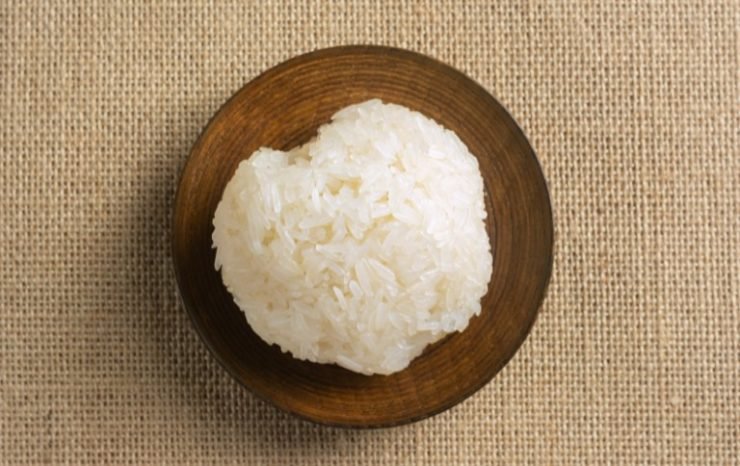Sticky rice is an ingredient used in a variety of different Asian dishes, from dumplings to desserts. It also makes for a simple, delicious, and unique side dish when you want a little change of pace from regular old steamed rice.
Traditionally, sticky rice is soaked for hours and then steamed.
I once worked in a restaurant where we had a multi-level steamer box the size of an industrial oven. And we would steam hotel pans full of the stuff several times a day.
Luckily, for anyone without such an elaborate setup, a trusty old rice cooker will do the job without any hassle. So, no matter what kind of machine you’re working with, here’s how to make sticky rice in a rice cooker.
In This Article
Making Sticky Rice In A Rice Cooker
1. Measure Your Rice

First, decide how much rice you’d like to cook, measure that amount of dry rice, and place it in the inner pot of your rice cooker.
Remember, rice will generally double in volume once it’s cooked. So, if you want to end up with about 4 cups of cooked rice, start with two cups of dry rice.
You can use the rice cup that came with your rice cooker, but any old measuring cup will work as well. Just remember how much dry rice you’ve added so you know how much water to add later on.
2. Rinse
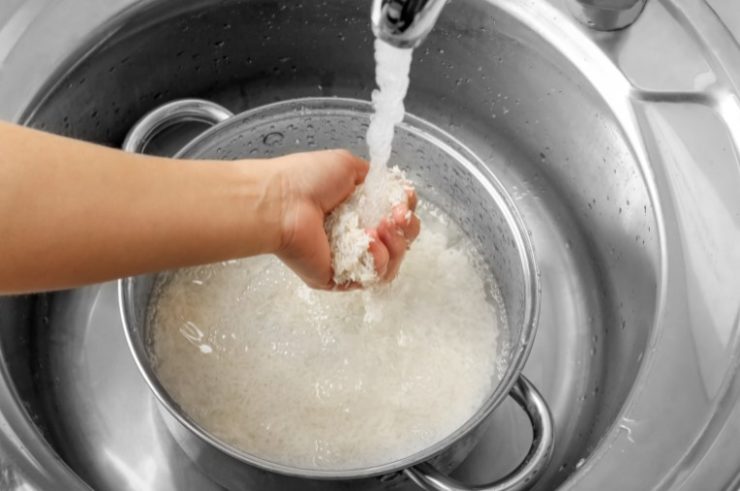
Cover your rice with a few inches of cool water and agitate with your hands. Then pour off the cloudy water. You can repeat this step a couple more times to rinse off any excess starch.
While we want this rice to stick and clump together, thoroughly rinsing it will yield more defined, individual rice grains once it’s cooked.

Even though the high starch content is what makes this rice so pleasantly sticky, you should still rinse off the excess starch that’s leftover from the polishing process.
3. Measure Water And Soak
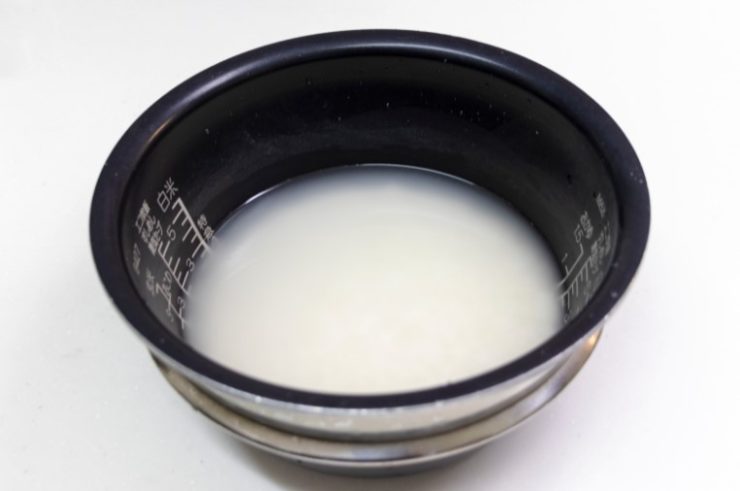
After rinsing and draining your rice, measure and add cool water to the rice cooker.
Your best bet here is to use the rice to water ratio that your rice cooker calls for. If it doesn’t have specific directions for sticky rice, use the same ratio that it calls for regular white rice.
For most machines that will be between a 1:1 and a 1:1.5 rice to water ratio. But, different sticky rice brands and types may call for slightly different amounts of water so check with yours before cooking.
Add your water to the rice in the inner pot, close the lid and let it soak before starting the cooker. It’s best to do this for at least 30 minutes, but you could also let it soak for several hours or even overnight.
Now, you can skip the soaking step if you just don’t have the time. But, doing it will help the grains cook more uniformly and provide the best texture once they’re cooked.
4. Start Your Rice Cooker
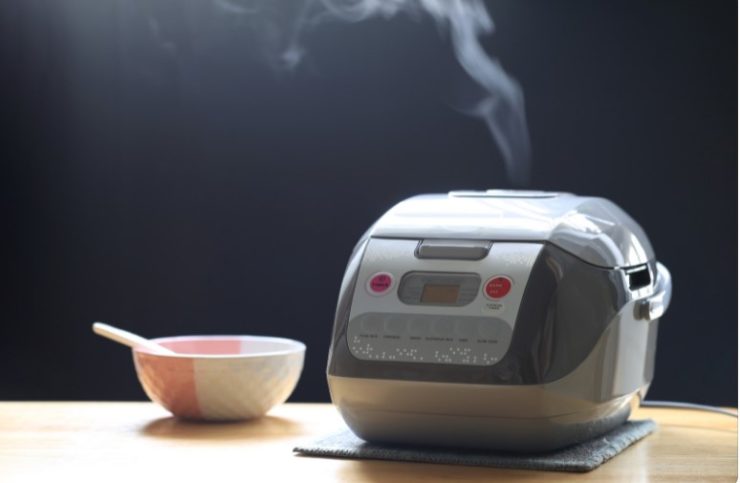
If your rice cooker happens to have a dedicated “sticky rice mode,” go ahead and use it.
If not, just use the regular white rice setting. And, if your rice cooker only has one setting and one button, you know what to do.
Your rice cooker will cook until all of the liquid is either absorbed or evaporated. And you’ll probably be looking at around 20 to 30 minutes of cooking time for sticky rice.
5. Rest And Enjoy
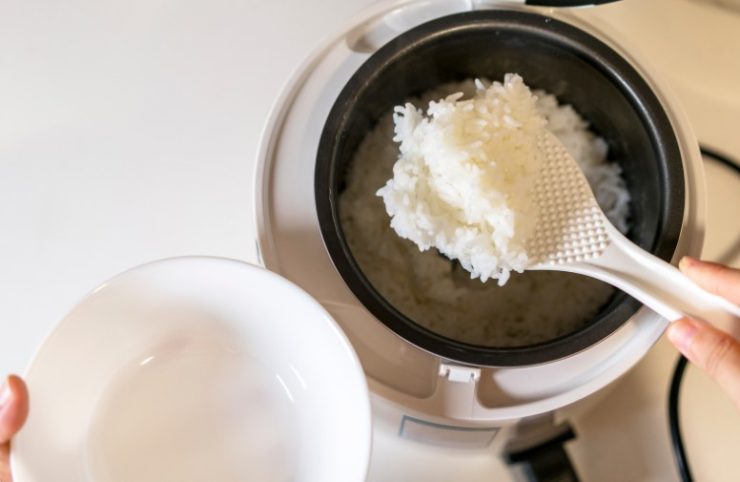
Once your rice cooker finishes its cooking cycle, let the rice rest for an additional 5-30 minutes before opening and digging in. This will allow the rice to gently finish cooking and will help moisture in the pot be more evenly distributed throughout all of the grains.
With most other types of rice, you would now do the additional step of fluffing. This is done to release excess moisture and help separate the rice grains. But, since sticky rice is, well, sticky you can go ahead and skip that step and dive right in.
If you’ll be serving a large bowl or pot of sticky rice at the table, it’s important to keep it covered with a lid or a moist towel. If you don’t, the outer layer of the cooked grains can turn hard and unappetizing rather quickly as they begin to dry.
What Makes Sticky Rice So Sticky?

The thing that makes rice more or less sticky is its starch content. There are two important molecules present in rice starch, Amylose, and Amylopectin.
All rice contains both, but some contain more of one than the other.
We don’t need to get too sciency here, but rice that contains a higher percentage of Amylose will generally cook up into more individual grains. These are most often your longer grain rice varieties like jasmine and basmati.
On the other hand, rice that has a higher percentage of Amylopectin will tend to clump together and be more sticky once it is cooked. And in general, rice with a higher Amylopectin content are the short-grain varieties, with sticky rice being the king of them all.
A Rice By Any Other Name
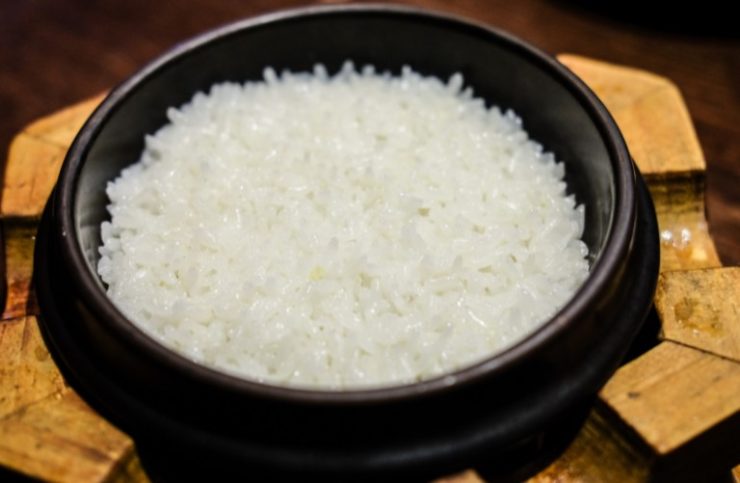
Sticky rice goes by a variety of different names depending on where in the world you are and what brand you’re looking at.
If you can’t find “sticky rice” at your local store, keep your eye out for one of these other names.
- Glutinous Rice
- Sweet Rice
- Sweet Short Grain
- Michogome
And if you can actually see the rice, one of the tell-tale signs that it’s the right kind is that the grains are very opaque, whereas most other white rice is translucent.
Final Thoughts
While sticky rice is more traditionally cooked in a steamer, using a rice cooker is faster, easier, and more convenient. If you know how to use a rice cooker for regular rice then you already know how to use one for sticky rice.
Luckily, any old rice cooker that you have should work just fine.
But, if you’re looking for an upgrade, our top 3 Japanese rice cookers are sure to make some of the best rice you’ve ever had.
Frequently Asked Questions
What’s The Difference Between Sticky Rice And Sweet Rice?
Sticky rice and sweet rice are actually the same things. There are several different names that are used for the same type of rice. Some of the other names used are mochigome and glutinous rice.
Can I Use Sushi Instead Of Sticky Rice?
No, sushi rice is another type of short-grain rice but it doesn’t have the same starch content that gives sticky rice its unique texture.
Is Sticky Rice Gluten-Free?
Yes, even though sticky rice is sometimes called glutinous rice it does not actually contain any gluten. Rather, the name refers to the sticky texture of the cooked grains.
